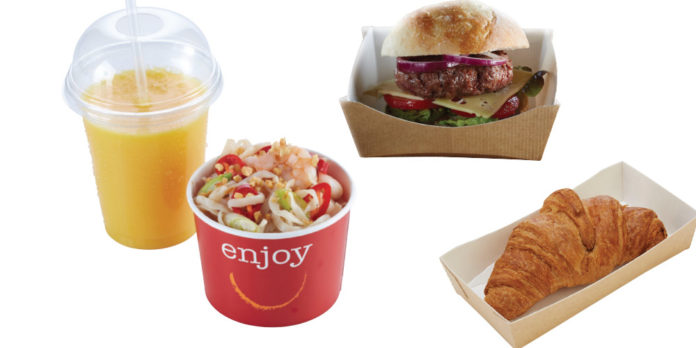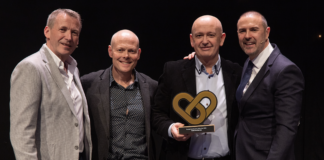Priyanka Jethwa looks at how packaging is changing in the FMCG sector as consumers look for greener, more attractive options.
The evolution of FMCG packaging this year has seen new trends and fads become a major part of the shopping experience for consumers. From mobile-connected packaging to the use of raw, distressed materials and funky engravings, people want to buy items that capture their Instagram aesthetic, and which tickle their tastebuds.
Thus, wholesalers need to be aware of what packaging is popular and then ensure that their products reflect what consumers want.
In this article, you’ll learn what the key trends in FMCG packaging are; why you need to think about what’s in your packaging range; and how you can make an impact with packaging and design in your own-label brands.
Top trends
Becci Eplett, UK marketing manager at Huhtamaki, a global specialist in packaging for food and drink, says that with food-to-go growing in popularity, “the packaging market has never been more important,” as its own research reveals that 73% of consumers buy food-to-go at least once per week.
Parallel to the surge in food-to-go, the demand for packaging that is premium and/or disposable has also grown, as attitudes towards the environment and the idea of quality over quantity have shifted.
This is why it’s important that wholesalers supply their customers with the types of packaging that can help to create return sales or add touches that attract new customers.
Natalie Phillips, category manager for complementary products at foodservice wholesaler Brakes, says: “Demand for biodegradable and compostable packaging remains strong, and we continue to develop our range in that area.”
Brakes is the first food distributor to stock Cornware’s biodegradable packaging, which is made from corn and yam, and Phillips adds that in addition to this growing green agenda, “bespoke print is also growing all the time to give a point of difference.”
Therefore, it’s no surprise that Huhtamaki has widened its range of versatile and comprehensive packaging with its aptly named ‘Eatwell’ range of paper food containers.
This new packaging is suitable for a range of takeaway concepts, coming in both recyclable and compostable varieties.
Value or quality?
Elizabeth Raw, web sales manager at R+R Packaging, a disposable packaging supplier, also notes that the key trend it has seen in the FMCG sector is more foodservice vendors wanting custom, printed products, alongside eco-friendly and recycled packaging.
Raw says that it’s important not to just shop for value when it comes to buying packaging, but to shop for something “slightly more”, as nicer packaging reinforces consumers’ confidence in a brand.
For example, one of R+R’s customers is a health food café and shop based in Newcastle called The Naked Deli. Its customers are both health- and eco-conscious, and seek the premium touch. Therefore, everything that The Naked Deli sells, be it the product or the package that it comes in, has to reflect this. The high-quality packaging it uses is designed to look aesthetically appealing and this helps it to be a clean-eating company, in the eyes of customers who don’t mind spending a little more to receive organic foods.
Brakes’ Phillips reiterates this, pointing out that as consumers continue to demand greater quality from their grab-and-go meals, having the right packaging in which to display your offer can make a difference to consumers’ perception of its quality.
“Consider a kraft box with a window that gives a premium feel and allows consumers to see the food inside,” she suggests.
Instagram aesthetics
Packaging serves a purpose beyond merely carrying food – it must enhance and improve the consumer’s experience. Therefore, it’s important to not just stock for margin control, but for quality and experience, too. Wholesalers should stock a range of containers that are both cost-effective and premium. This involves thinking about the quality of the material, and assessing its effectiveness in its opening and structure, as well as its ability to keep food fresh and appealing.
But as Julian Money, founder of food packaging solutions and systems company RAP, notes: “So long as you are offering quality without compromising design, the industry will no doubt push the boundaries on many fronts and we will see more diverse products.”
Furthermore, the necessity for the packaging to communicate specific messages to consumers is equally as important, especially in an age when social media is at the forefront of many people’s thoughts – they now want something that looks good enough to post online.
Häagen-Dazs recently underwent a revamp that saw food innovator Bompas & Parr partner with the ice-cream manufacturer to shake up its brand identity, in order to appeal to a larger demographic. This was achieved by redesigning the packaging to appeal to millennials.
It’s not alone – shifts in rebranding packaging to appeal to more consumers have been seen throughout the FMCG sector of late, with Adelie Foods looking to shake up its food-to-go sales by redesigning its sandwich brand, Urban Eat.
RAP has also seen a surge in demand for premium packaging. It has worked closely with brands including Pret A Manger: “We approached Pret with our packaging design over 20 years ago and they were very receptive,” Money says. “They needed more effective, modern packaging that moved away from plastic skillets and which was better-suited to the sandwich market. From this partnership, our DayFresh carton wedge was born.”
This directly accounted for a steady rise in sales, largely down to the product being aesthetically more appealing on the shelf. “A premium product now had the packaging to match,” Money concludes.
Tackling takeaways
Takeaways and restaurants continue to demand products from the value end of the market. But slowly, they are looking for more interesting designs, in line with a growing trend in which consumers want traditional sit-down establishments to offer a takeaway service.
However, R+R’s Raw points out that most of its customers still require a cheaper option due to financial constraints. She adds that a few years ago, takeaways and restaurants wanted eco-friendly packaging, but as inflation increased, people went back to the cheapest options available.
So, should wholesalers be making space in-depot to improve their packaging? Yes. With consumers increasingly wanting more takeaway options, wholesalers must be offering innovative, premium packaging that can increase sales.
When doing so, packaging “shouldn’t be an afterthought or a necessary evil,” RAP’s Money notes, but something to which wholesalers dedicate time and effort, if they serve foodservice vendors or retailers with a food-to-go offer.
The way to convince your customers to explore more expensive routes is by highlighting that packaging does more than ‘store’ food – it can be instrumental in growing sales.









[…] Feature: Box of delights: how packaging is changing in the FMCG sector: http://www.betterwholesaling.com/fmcg-packaging/ […]